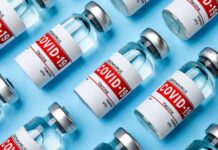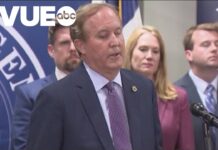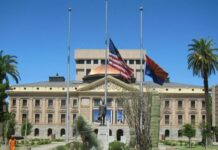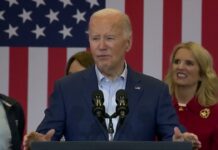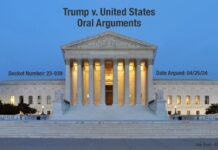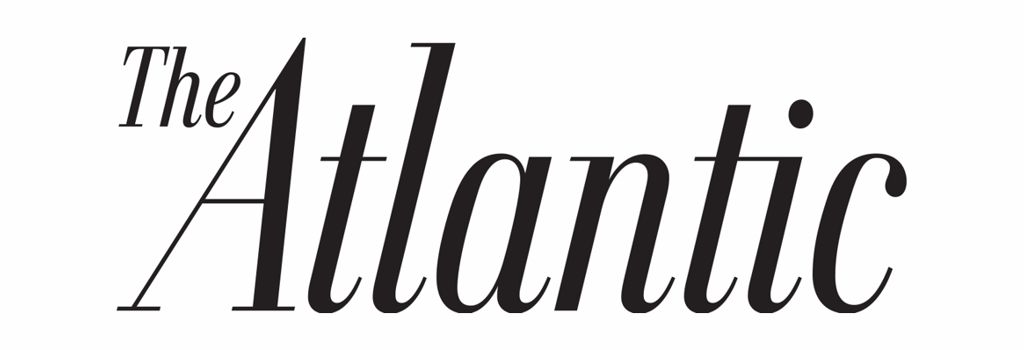
Districts should rethink imposing on millions of children an intervention that provides little discernible benefit.
In the panicked spring of 2020, as health officials scrambled to keep communities safe, they recommended various restrictions and interventions, sometimes in the absence of rigorous science supporting them. That was understandable at the time. Now, however, two years into this pandemic, keeping unproven measures in place is no longer justifiable. Although no district is likely to roll back COVID policies in the middle of the Omicron surge, at the top of the list of policies we should rethink once the wave recedes is mandatory masks for kids at school.
The CDC guidance on school masking is far-reaching, recommending “universal indoor masking by all students (age 2 and older), staff, teachers, and visitors to K–12 schools, regardless of vaccination status.” In contrast, many countries—the U.K., Sweden, Norway, Denmark, and others—have not taken the U.S.’s approach, and instead follow World Health Organization guidelines, which recommend against masking children ages 5 and younger, because this age group is at low risk of illness, because masks are not “in the overall interest of the child,” and because many children are unable to wear masks properly. Even for children ages 6 to 11, the WHO does not routinely recommend masks, because of the “potential impact of wearing a mask on learning and psychosocial development.” The WHO also explicitly counsels against masking children during physical activities, including running and jumping at the playground, so as not to compromise breathing.
But in America about half of the country’s 53 million children remain compulsorily masked in school for the indefinite future. Sixteen U.S. states and the District of Columbia follow the CDC guidance closely and require masks for students of all ages, regardless of vaccination status; other states rely on a patchwork of policies, usually leaving decisions up to local school districts. (Nine states have banned school mask mandates, though in five of them, lawsuits have delayed implementation of the ban.) Many deep-blue areas such as Portland, Oregon; Los Angeles; and New York City have gone beyond CDC guidance and are masking students outdoors at recess, in part because of byzantine rules that require an unmasked “exposed” student to miss multiple days of school, even if the putative exposure is outside.
Read: The CDC’s flawed case for wearing masks in school
A second and more recent study of Arizona schools in Maricopa and Pima Counties concluded that schools without mask mandates were more likely to have COVID-19 outbreaks than schools with mask mandates. Yet more than 90 percent of schools in the “no mask mandate” group were in Maricopa County, an area that has significantly lower vaccination rates than Pima County. This study had other serious shortcomings, including failure to quantify the size of outbreaks and failure to report testing protocols for the students.
The third CDC study found that U.S. counties without mask mandates saw larger increases in pediatric COVID-19 cases after schools opened, but again did not control for important differences in vaccination rates. The CDC has cited several other studies conducted in the previous school year to support its claim that masks are a key school-safety measure. However, none of these studies, including ones conducted in North Carolina, Utah, Wisconsin, and Missouri, isolated the impact of masks specifically, because all students were required to mask and no comparisons were made with schools that did not require masks.
Therefore, the overall takeaway from these studies—that schools with mask mandates have lower COVID-19 transmission rates than schools without mask mandates—is not justified by the data that have been gathered. In two of these studies, this conclusion is undercut by the fact that background vaccination rates, both of staff and of the surrounding community, were not controlled for or taken into consideration. At the time these studies were conducted, when breakthrough infections were much less common, this was a hugely important confounding variable undermining the CDC’s conclusions that masks in schools provide a concrete benefit in controlling COVID-19 spread: Communities with higher vaccination rates had less COVID-19 transmission everywhere, including in schools, and those same communities were more likely to have mask mandates.
By Margery Smelkinson, Leslie Bienen, and Jeanne Noble
Read Full Article on TheAtlantic.com
About the authors: Margery Smelkinson is an infectious-disease scientist whose research has focused on influenza and SARS-CoV-2. Leslie Bienen is a veterinarian and faculty member at the Oregon Health & Science University–Portland State University School of Public Health. Jeanne Noble is an emergency-medicine doctor at UCSF.



